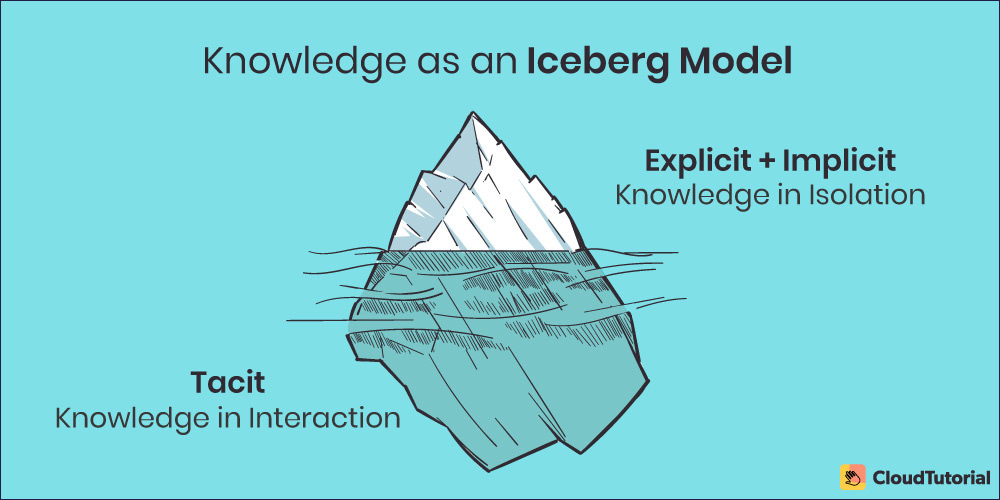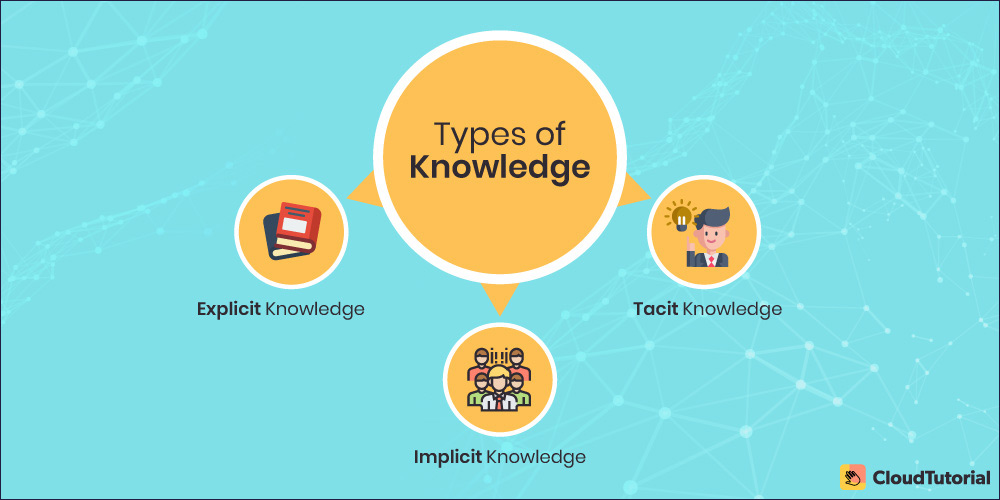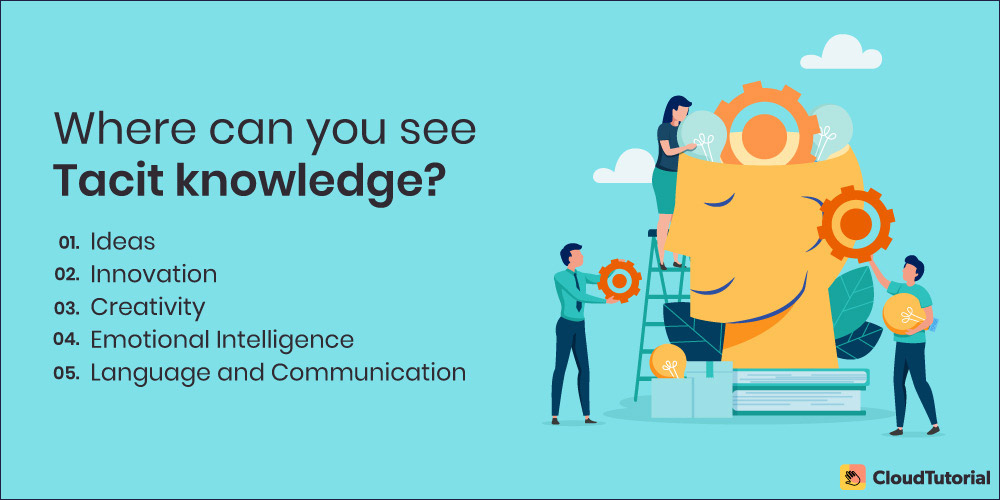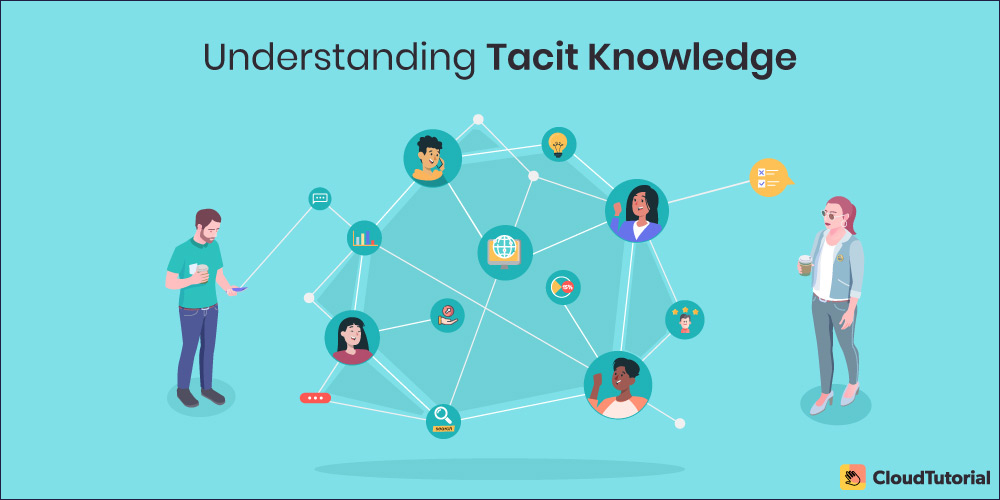The knowledge acquired and retained by your team members is one of the most precious assets of your organization. Ever wondered how they know so many things and are aware of them?
Such information gained through experience that is tough to communicate or describe in words is termed as Tacit knowledge. Let’s understand this type of knowledge in-depth through this blog post.
Table of Content
According to the definition by Cambridge University Press, Tacit knowledge can never be captured through words alone but can be gained from personal experiences, like working at an organization.
People often say using the right words will help you better understand and explain it to others. But how do you teach and acquire tacit knowledge? How do you teach an individual about something that can only be known through experience? Let’s find out the answers by examining the tacit knowledge examples in this blog.
What is Tacit Knowledge?

Any knowledge, information, skill, and ability that an individual has gained through experience is often quite challenging to explain, communicate, or simply put into words, known as Tacit Knowledge.
Tacit knowledge is also commonly known as know-how knowledge, experiential knowledge, or Tribal knowledge.
This tacit or tribal knowledge is not documented in any manner, nor is it actively discussed or pointed out by someone from the teams. Similarly, know-how clearly explains the science of this type of knowledge, which is that it is difficult to explain how an individual or team member knows what he knows and how he gained that expertise.
Why is Tacit Knowledge Necessary?

We have a lot of information and opinions surrounding us, stating the importance of tacit knowledge as a strategic resource that can help an organization reach its goals. Tacit knowledge is more procedural and intuitive; it is not entirely based on facts. Tacit knowledge also helps identify the knowledge gaps in the content.
Let’s observe why documenting and sharing tacit knowledge is significant for organizations to enhance their productivity and sales:
Preparing People for Challenges
Suppose the organizations can draw out essential explicit and tacit knowledge from subject matter experts. In that case, it can be helpful in preparing people for challenges and building competence in their workplace. First, we need to figure out which strategy or idea goes into an expert’s decision-making and problem-solving method.
Easy Transfer of Knowledge
When an expert leaves a job, the organization loses an employee and a large amount of tacit knowledge because they failed to transfer them to other team members. A loss like this is hard to recover from. It can prove to be costly and time-consuming, and in most cases, impossible to replace. Also, it creates knowledge gaps.
Organizations need to find ways to extract that tacit knowledge, store it, and transfer it to people they think might benefit from this exchange. In terms of an organization’s future success and attaining goals, the transfer of tacit knowledge becomes an essential element. They can use data sheets for this purpose.
Develop and Manage Knowledge Management System
In many cases, organizations overwrite and lose the tacit knowledge they already possess due to inadequate knowledge management. Any organization has all the required implicit or tacit and explicit knowledge already deeply embedded into its processes and procedures.
To avoid such a loss, it is crucial to develop and manage its knowledge management system. They can also try to make it more explicit with the help of the right knowledge management platform and strategies.

Want to Retain Vital Documents Securely?
CloudTutorial allows you to create and store articles for FREE. You can share them with custom roles to maintain privacy.
Tacit, Explicit, and Implicit Knowledge: What’s the Difference?
Tacit Knowledge and implicit knowledge are often used interchangeably, but that is not accurate in clearly defining what tacit or implicit means. Let’s view the difference before you invest resources in a knowledge management platform:
- While tacit knowledge cannot be expressed or explained, implicit knowledge is simply a form of explicit knowledge that has not been documented yet.
- To change implicit knowledge into explicit knowledge, the only step required to do is record or document the knowledge word for word.
- The understanding and the recording of knowledge management is a crucial distinction between implicit and explicit knowledge.
- Recording and transferring such knowledge is a much more active and engaging process than other best recording information and knowledge transfer practices.
When you are trying to define explicit knowledge and implicit or tacit knowledge, each piece of knowledge is captured or recorded by the organization as a continuous or whole piece. It comes in case studies or tutorials, even though no part of that information is noticeably different from the other, even though the extremes are very different from others.

If we were to define tacit, explicit, and implicit knowledge, this is what we would mean by it:
- Explicit Knowledge: Any topic or piece of information that is easy to explain, record, and share through a method or an example is called explicit. The best example of explicit knowledge is any document or data transmitted on the knowledge management system of your workplace.
- Implicit Knowledge: The application or the way of using or applying explicit knowledge is called Implicit Knowledge. When you can transfer skills from one person to another in a company, it is an example of implicit knowledge.
- Tacit Knowledge: Any knowledge experienced by a quite difficult person to explain or share by either writing it down or verbalizing is called Tacit Knowledge.
This comparison might have you wondering how tacit knowledge management is helpful if it is difficult to share or express? Tacit knowledge is a powerful source of knowledge transfer. If approached with the right method, tacit knowledge can help a team member reach his full potential and contribute in a wholesome way toward the team.

Share Vital Information With Employees & Customers Now!
Share anything with your employees and customers to access using CloudTutorial Knowledge Base!
What are Examples of Tacit Knowledge?

Innovation
Having good ideas and innovating is a skill that is not always common and depends on several factors; it is not easy to find or catch. There is still someone who can formulate ideas and come up with innovations better than others.
Leadership
Leadership is a complex social skill often in-built in a person or a team member. Even though we have many workshops and leadership activities, they are a portal or a practice for natural leaders to quickly touch their leadership.
No guaranteed process can transform you into a leader; it comes from experience, expertise, problem-solving, and the ability to take a stand.
Creativity & Aesthetics
Aesthetics and artistic sense is a skill that is difficult to explain. Much like leadership, creativity and appreciation for aesthetics are often ingrained in an individual right from the beginning.
There are ways to get in touch with their creative self and realize their potential. It might be easy to teach art or have an art form of looking at things, but the aesthetic sense is even more challenging to teach or transfer from one person to another; this is an excellent example of Tacit Knowledge.
Emotional Intelligence
Emotional intelligence, like other skills, can be developed over time, but this skill cannot be explained with a definite structure. It is an objective skill, and it is about having the ability to read emotions and influence specific outcomes.
For individuals, emotional intelligence is about understanding each other and reading a person through verbal or non-verbal interaction.
Sense of Humor
Sense of humor, like emotional intelligence, is an ability that can be developed, but it is challenging to do so. It is about understanding or having the approach of looking at things from a lighter, funnier perspective.
A good sense of humor is all about finding things to laugh at, right timing, and taking a joke as good as you are at giving one.
Sales
A sales pitch is considered a skill some people have right from their childhood, and if they are not trained enough in it, they end up suppressing this skill.
You will see people working in a sales team for years but not succeeding or reaching a satisfactory level. This is because sales is a skill that is inherent and cannot precisely be taught to you and hence, cannot be included in your implicit knowledge base.
People often have many individuals following them and trying to learn their skills. Still, sales are among the skills that cannot be taught or transferred easily from one person to the other, another classic example of tacit knowledge.
Language
Language is another significant example of tacit knowledge. The notion of language cannot be taught. You cannot only learn a language by learning the rules of grammar. The only way you pick it up is if you are a native speaker of the language or have been practicing it for an extended period.
Native speakers often pick it up much more comfortably because they are surrounded by it. Therefore, even if they are not aware of all the grammar rules initially, they still speak the language very well and only get to know about the grammar rules at a much later stage.

Want to Preserve Knowledge in Your Company Wiki?
CloudTutorial KB platform helps you to store important files containing projects, policies, & procedures in your corporate wiki.
5 Importance of Capturing Tacit Knowledge in Your Organization
Gaining new knowledge while retaining organizational concepts
Any organization has a vast amount of tacit knowledge, which proves to be a valuable asset for the organization and its team. This asset is not just a symbolic asset.
- If a team member has documented tacit knowledge, it depicts how dedicated and responsible he or she is towards acquiring organizational goals. Moreover, with access to such info, the process of decision-making becomes smooth.
- On the other hand, it provides team members with significant insight into a company’s goals, vision, and mission.
- When such a database is created in a knowledge management platform, it becomes easier for you to attract high-quality candidates looking to contribute and feel valued in a particular manner.
- The same documentation of tacit knowledge management is useful for investors and stakeholders. It gives them confidence in their holdings and investments in your company because now they have proof to support it.
- The same documented tacit knowledge can help buyers of your business clarify how it will benefit them.
Want to create knowledge capital for your organization and the individuals who are associated with it?
CloudTutorial’s categories and subcategories options in their knowledge sharing system can help anyone access the experience and knowledge base. In addition, such knowledge capital helps retain old employees while hiring new ones.
Effective Communication in an organization:
When team members can absorb knowledge from working with fellow employees and gaining more experience, it is referred to as tacit or tribal knowledge.
- Capturing tacit knowledge and seeing if the transfer of knowledge from one individual to another or one team to another is feasible or not.
- Recognize tacit knowledge and prevent knowledge loss for the existing and upcoming team members.
- Sometimes, even the teams you have worked with will not have gained that tacit knowledge for a long time.
- The reason for this is that the team members often aren’t even aware of the tacit knowledge available to them. Such a situation might arise in a case where there is hardly any interaction between the employees.
- This is why having tacit knowledge recorded, documented, and communicated to your employees becomes so much more important.
- You will see changes when this information is made visible to them and met with practice from the employees.
Onboarding new employees also becomes easier for the organization. Each unique individual is required to learn about the processes and ways of working at the organization.
- The codification of tacit knowledge adds even more value to the company’s existing knowledge content while making the new employees learn how to do their tasks efficiently.
- If the updated information is uploaded to the knowledge repository, it becomes easy for the teams to work more effectively.
- This practice of increasing knowledge capital and having tacit knowledge recorded shows that info only becomes more valuable when given context.
- When used in the proper context, tacit knowledge can motivate your employees to share their tacit knowledge with ease. It will also improve employee turnover.
With CloudTutorial Knowledge Management, get the required knowledge or questions answered. In this way, effective communication will be arranged between your company and your clients.
Having content that helps the users or clients better understand the products and services will result in a great customer experience and is a sign of excellent customer support.
Helps in learning new skills
Organizations have a designed and worked-out process and strategy developed into best practices for the employees. Each individual has a different level of understanding and experience. Based on these, the explanations of your tacit knowledge need to be created into expert systems developed by experts who have helped transfer tacit knowledge from one person to another.
- When expertise is shared, and a knowledge base is created, it helps individuals practice their old skills while picking up some new ones on their way.
- It is also about setting up the right example for the person who will enter the workforce at a later stage.
- Subject matter experts have stated that when knowledge is shared in the form of content and each topic is designed carefully and that people find it informative and useful, they are bound to learn a few valuable skills from this process.
- The same happens on social networks where individuals try in so many ways to be expressive and share their tacit knowledge through words.
Helps in Tracking progress
Having recorded and documented tacit knowledge creates a benchmark that can be aimed at the organization and its individuals. When you have a carefully designed system that is made to teach people, it is essential that you can track their progress as well.
- The same tacit knowledge that you have been recording and transferring through different channels can help you make aware of the organization’s progress.
- The benchmarks provided by the knowledge capital work as end goals for individuals, teams, and the whole organization is more responsive.
- When you try to compare how the learning curve has been shaped with the expectations from the benchmarks or goals set by the knowledge capital, you can effectively track the progress.
Want to track information and documents? The reports in CloudTutorial features make this task easier for you.
You can view these documents in terms of performance and usefulness. This can help you track the progress of the knowledge base you share and whether or not you are successful in transferring tacit knowledge into explicit knowledge.
Enhances Innovation and Productivity
When knowledge capital is developed collaboratively by receiving information from all the teams, the employees and the organization are bound to perform much better and be far more productive.
- When this kind of knowledge capital is already available, it eliminates the chances of mistakes or errors being made by the employees.
- When you avoid errors, you save a lot of time, energy, and resources and invest the same time and resources in more pressing matters or something that requires immediate attention.
- Employees gain a new perspective, and this can open up an entirely new domain for them, which has higher chances of a breakthrough.
- It can also support and push employees to think outside the box and take up responsibilities they would otherwise be intimated to take up.
Similarly, CloudTutorial has a customization feature that allows you to develop innovative themes, domains, fonts, and colors, according to your requirements. Again, you do not have to be tech-savvy, but it still tries to enhance innovation and productivity in the way you present your content.
With this blog, the importance and examples of tacit knowledge can be clearly understood. This created room to discuss how tacit knowledge is different from implicit or explicit knowledge and whether or not tacit knowledge can be made into explicit knowledge.
Some of the best knowledge management systems like CloudTutorial make it easier for organizations to create content for their users and employees. Sign up for FREE to record and document tacit knowledge so that the required data gets dispersed among your members.
Try it out before you decide.
Create a test article NOW!
Using this tool, all you have to do is add your first test article and see how it looks. Now, you don’t have to sign-up or login into CloudTutorial software just to check how your first article appears.

